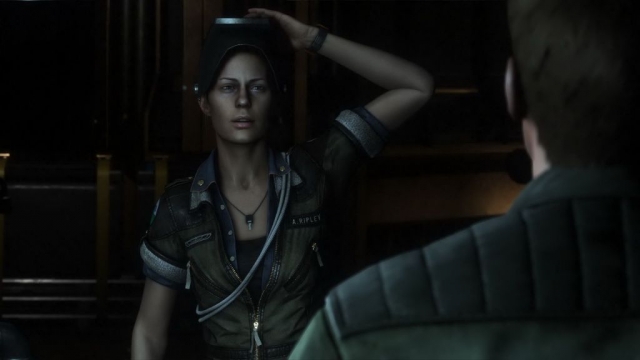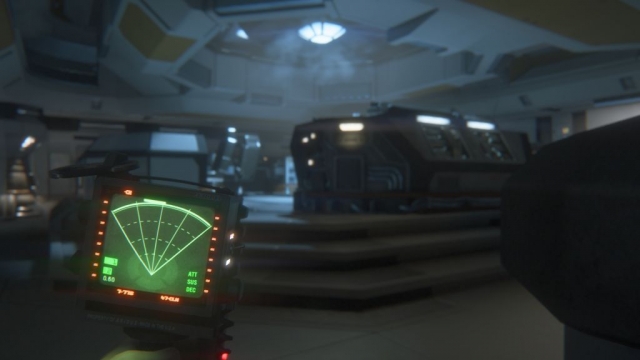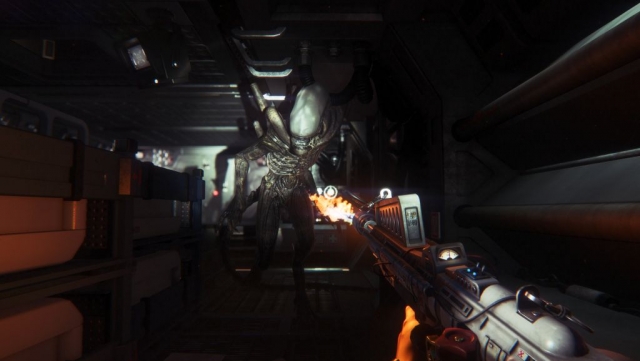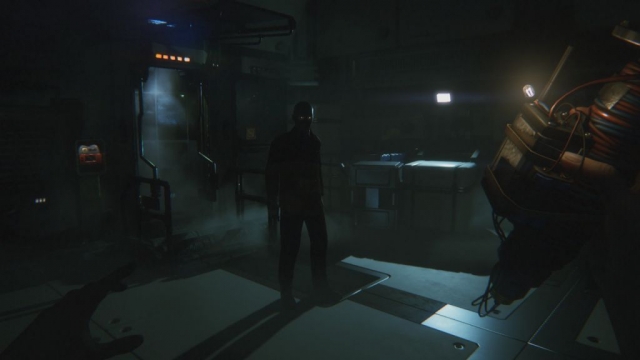Alien: Isolation
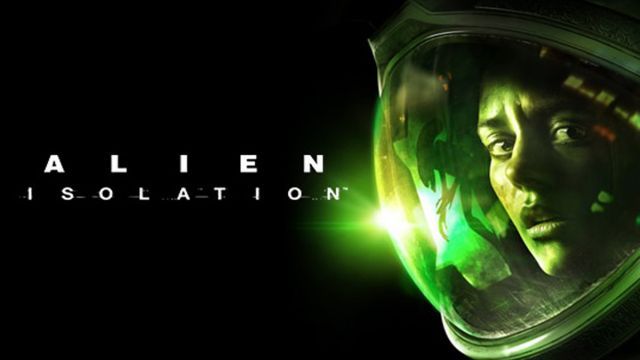
I remained cautiously optimistic as I removed the shrinkwrap from my review copy of Alien: Isolation. I had seen the first-person survival horror title in person at an event just a month or two before, and I came away impressed, but the sour taste of Aliens: Colonial Marines still lingered long after its release more than a year and a half ago. Could The Creative Assembly, yes that Creative Assembly, the developer best known for their Total War series of strategy games, bring honor back to the Alien(s) franchise – glory not seen since the days of Aliens Versus Predator 2 on the PC back in 2001? Cautious optimism.
Alien: Isolation is set 15 years after the events of the first film, Alien. Ellen Ripley is in the midst of her 57-year stasis back to Earth, but Amanda Ripley, her daughter, is unaware of her mother’s whereabouts. Amanda works as a technician for Weyland-Yutani Corporation in the space sector where her mother’s ship vanished, so when The Company offers her the opportunity to gain some insight and perhaps some closure on the fate of her mother by retrieving the Nostromo’s flight recorder being held aboard Sevastopol Station, she eagerly accepts. But when Amanda becomes separated from her crewmembers and trapped aboard the remote space station, she quickly realizes there’s something very wrong going on. Sevastopol Station is in a state of decay; its remaining inhabitants are armed and in a state of panic (never a good combination); its synthetic androids (aka Working Joes) are malfunctioning and attacking humans; and the station’s controlling AI, Apollo, appears to have a hidden agenda. Oh, did I mention a Xenomorph creature is loose on the ship? It’s just another day in the life of the Ripley’s.
Alien: Isolation is molded after Ridley Scott’s seminal 1979 sci-fi horror flick, Alien. It’s pacing is slow and methodical, building suspense before revealing the unstoppable menace. It’s also rooted in classic game design. It employs manual save points and is free of handholding, and while I appreciate the additional challenge presented by this design theory, it’s also the source of some of the game’s drawbacks. I’m all for a game light on handholding, but there needs to be some sort of cue when non-descriptive objectives are presented to players.
For instance, I struggled for at least 15 minutes searching for a keycard in order to escape an office space while a small army of androids threatened my life from behind a large metal door. I searched every inch of that office until I got fed up, opened the door, and used every last one of my EMP mines and Molotov cocktails to incinerate the Working Joes. It was only then, after the last Joe had been disabled, that Amanda spoke up and said, “Maybe one of the androids has the keycard.” Thank you Amanda, but I would have appreciated the heads-up, oh, I don’t know, 14 minutes ago? That wasn’t the only time I didn’t know what to do or where to go next. Sure, I eventually figured everything out, but not before annoyance set in on a few occasions.
As I played through Alien: Isolation, I couldn’t help but be reminded of the original Dead Space. Not since that title have I seen such brilliant use of lighting and sound design in a survival horror game. The environment is the real star here. Sevastopol Station is so well modeled, so lovingly crafted, with amazing attention to detail. The art direction is stunning as well. The development team stayed true to Ridley’s Scott’s original artistic vision, a retro-future aesthetic complete with phone receivers, tape recorders, big button consoles and CRT monitors.
Alien: Isolation is a truly terrifying experience when it’s elements work in concert with one another. Those edge-of-your-seat moments when you can hear the Alien crawling in the vents above you; moments when you’re forced to inch along while synthetics eerily stalk the hallways talking to themselves; moments when you hold your breathe as Amanda holds her breathe while the Alien lurks right outside the locker she’s hiding within; moments when you realize you only have but a matter of seconds to use your access tuner to hack open a door before the Alien finds you; moments when the music builds up to a crescendo just as your motion tracker begins to beep fiercely. The game does an excellent job creating real tension, but it also has a habit of breaking the tension by dragging things out with repetitive sequences. Also, that tension can quickly turn to frustration whenever you have to repeat prolonged sections of the game over and over again because you forgot to save your progress, or because you couldn’t locate a manual save point to begin with. It’s a delicate balance that the development team gets mostly right, but with a single-player story that clocks in at over 15 hours, you’re bound to have a few throw-your-controller-at-the-screen moments mixed in with the many nail-biting moments.
Alien: Isolation is a game that emphasizes stealth, exploration and puzzle-solving, but it’s not completely devoid of combat. You’ll gain access to weapons including a revolver, a stun baton, a shotgun, a bolt gun and a flamethrower. Only the flamethrower is effective against the Alien, but even then it won’t kill the Xenomorph, only scare it away for a brief period. Ammunition is at a premium so you’ll want to be real picky about using any bullets. You’ll want to scavenge the space station for materials as there’s also a crafting system that lets players build weapons and items such as medkits, noisemakers, Molotov cocktails, EMP mines, smoke bombs, etc. – items that not only prove useful in combat but also as a means to lure or divert the attention of hostiles, including the Alien. The user interface for crafting is a little clunky, but I appreciate that the game doesn’t pause while you build an item – or use a hacking device to open a door, a plasma torch to open a panel, or a phone booth to save your game.
The Alien AI is randomly generated. There are a few scripted sequences, but for the most part you can’t rely on memorizing or predicting the Alien’s path, even after you’ve reloaded a save point. If the Alien sees you, it’ll come after you. If it hears you, it’ll come after you. And the Alien automatically kills you with one hit, so you can and should expect to die…a lot. A lot a lot. I actually had to decrease the difficulty from hard to normal just so I didn’t feel like I had to crouch the entire time, inching forward at a snail’s pace. Oddly, the hostile human survivors and androids you encounter in the game seem like they have even more heightened senses than the Alien. There were a few instances when I couldn’t believe a Working Joe spotted me from across the room while I was crouched behind an object. Luckily they’re much easier to run away from – or kill for that matter.
I’ve already mentioned how great the art direction, lighting and sound design are, but I’ll go over some of the other production values. The Alien itself is well modeled, though I wish they added animations to allow it to run along the walls and ceilings, and not just the floor. The mannequin-like Working Joes are creepily designed and the human characters all look good as well, though what’s with the beads of sweat running down their faces? They all look like they just got out of a sauna. The only drawback, visually, is the occasional frame rate issues found particularly in the cutscenes. Alien: Isolation is sure to win numerous “Best Sound” awards at year’s end. Everything from the soundtrack, to the iconic beep of the motion tracker, to little details like the swishing of fluid in the canister of your flamethrower when you run around – it’s all simply phenomenal. The only blip on the radar is the voice acting, which has some uneven performances.
Alien: Isolation is a fairly long game, clocking in at roughly 15 hours – time that can feel like an eternity as you slowly inch along on the highest difficulty setting. I’ve heard criticism that the game is too long for its own good, but you’ll never hear me complain that I’m getting too much of a (mostly) good thing. When the story reaches its conclusion, Survivor Mode awaits. The target of all future DLC, Survivor Mode takes the best part of the game – being hunted by the Alien – and turns it into a mini-game. The object of this mode is to reach the exit of each level, which always involves completing an objective first, all the while avoiding the Xenomorph. There are also side objectives that you can complete to earn extra points. Leaderboards show off players with the fastest time, as well as those with the most points. And again, because the AI is randomly generated, you can’t just assume the Alien is going to follow the same path – though it does mean you can memorize the layout of the level.
Alien: Isolation isn’t a game for everyone. It requires patience, not twitch reflexes. At times the design choices can be counter-effective to the experience, but when its elements work in harmony – the art direction, the lighting, the sound design, the level design, the enemy AI – the relentless tension is palpable. Alien: Isolation isn’t a perfect game, but it’s the Alien game I’ve always wanted to play. If you’re a fan of Ridley Scott’s 1979 sci-fi horror film, it’s an experience you absolutely must try.
Reviewed By: Stephen Riach
Publisher: Sega
Rating: 80%
——————————————————————————–
This review is based on a retail copy of Alien: Isolation for the PlayStation 4 provided by Sega.
 Game Over Online
Game Over Online